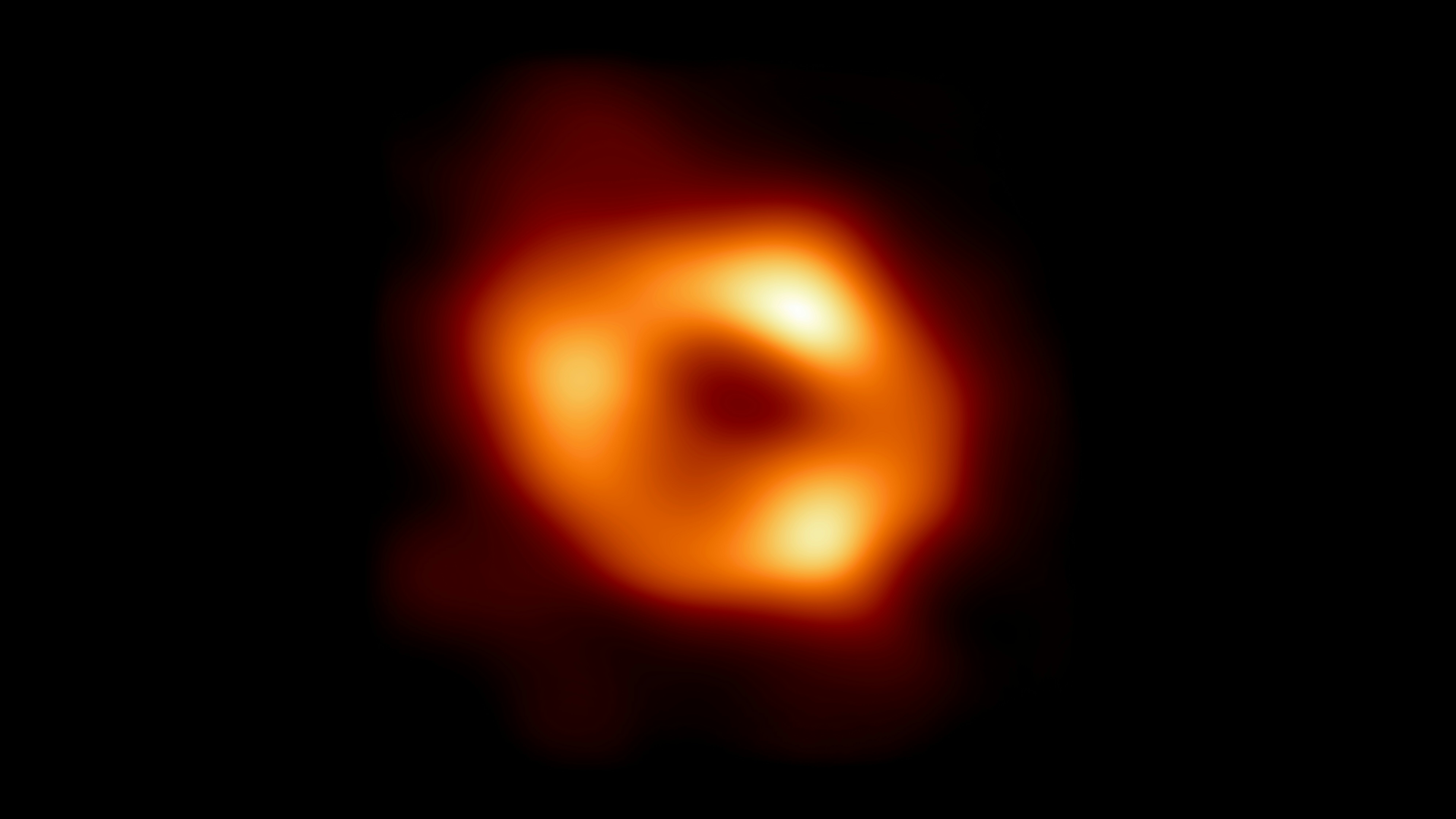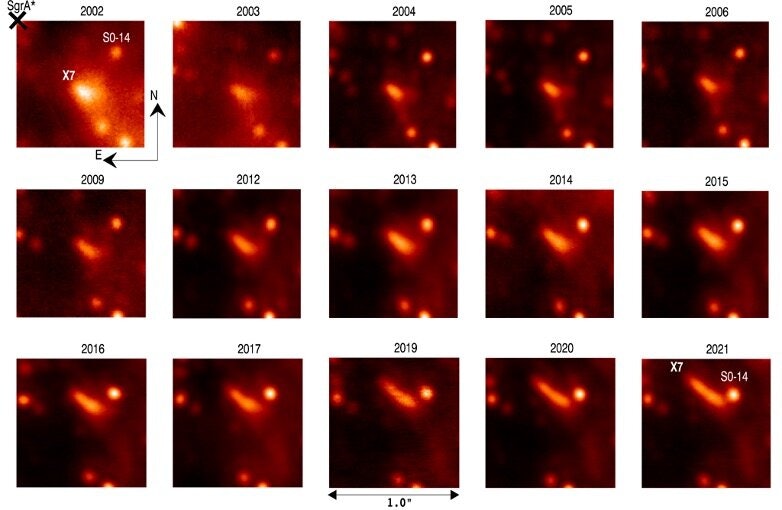
Approximately 26,000 light years away, a strange and enormous cloud is being stretched and strained under the tremendous tidal forces of Sagittarius A*, the supermassive black hole at the center of our galaxy. In just 13 years, astronomers expect this cloud, known as X7, to be torn to shreds by the extreme environment.
But for now, according to a paper published this week in The Astrophysical Journal, the doomed cloud, 3,000 times longer than the distance from the Earth to the Sun, provides clues to the strange and extreme environment around a black hole 4 million times more massive than the Sun.
What is X7?
When X7 was first noticed in 2007, astronomers described it as a comet-shaped object close to the galactic center. X7 was classed as a G object, a group of oddball blobs of gas that orbit the supermassive black hole Sagittarius A* (Sgr A*) at the center of the Milky Way that act like gas clouds when far from the black hole only to hold together like stars as they draw closer in their orbits.
Despite its cometary comparison, X7 was vastly more massive than any comet — about 50 times the mass of Earth altogether. Over the last decade-and-a-half, though, astronomers have been able to watch X7 stretch and shift in real-time. In that time, X7 grew twice as long as it once was — indicating that it is being stretched out by Sgr A* like a noodle. It’s still “relatively small and relatively light,” Anna Ciurlo, an assistant researcher at UCLA and lead author of the paper explains to Inverse, and “that’s why it gets stretched, because it’s vulnerable to the forces of the black hole.”
A filament like X7 is an extreme object in an extreme environment — even though it’s traveling at 490 miles per second, its orbit around the supermassive black hole at the center of the Milky Way would take 170 years if it were to complete it successfully (more on that in a moment).
“It was only created a few decades ago, and in a few decades, it’s going to be destroyed. And a few decades, even a hundred years, is a very short timescale on astronomical scales,” explains Ciurlo. “So you have to be kind of lucky to observe this object shortly before it was destroyed and after it was created.”
Or at least, she adds, “you have to be lucky unless these types of objects are kind of common.”
Finish your food, Sgr A*
Just what type of object X7 is and where it came from is still something of a mystery. When it was first detected, astronomers thought it might be the result of a jet or wind blown out from a nearby star, S0-73. But looking over data from the last 20 years, the team found the two aren’t moving in the same direction, nor are they in quite the same three-dimensional volume.
A gas filament like X7 might have been ejected from a nearby star, or it could have been stripped away from some other larger structure, Ciurlo says, but “it’s moving in a slightly different way, so it’s hard to imagine how [those] would put it in the orbit it’s in now.”
Instead, the team suspects X7 is the result of a close scrape between two binary stars. In the extreme tidal environment around a supermassive black hole, binary stars are common, and so are the collisions and mergers between them. If two stars grazed against each other, a long stream of gas and dust would be ejected from their violent collision, which would match the shape and behavior of X7. This “fits into the story we’re telling about the galactic center,” says Ciurlo. “No answer for sure, but this is a nicely-fitting scenario.”

Even though it’s zooming around the center of our galaxy at tremendous speeds, X7 will be ripped apart by Sagittarius A*’s tidal forces long before it completes its next 170-year orbit. In 2036, the team estimates, X7 will reach its periapse passage — its closest approach to the black hole. “We already see how it gets pulled apart,” Ciurlo says, “and we’ll see it become different pieces of gas and dust, and get dimmer and dimmer as it gets destroyed. We’ll lose it at some point.”
Even though X7 is zipping around Sagittarius A* 26,000 light years away (and its fate was sealed about 25,987 years ago), that’s still 794,000 light years closer than the next-closest supermassive black hole, in the dwarf galaxy Leo. This means astronomers will “have a close-up view of what happens to a gas cloud very close to a supermassive black hole,” Ciurlo explains. “You can’t have that anywhere else.”
Along with the Keck telescopes used to observe it since 2002, the JWST is scheduled to take a look at the Sagittarius A* and X7 in the coming months. JWST observes in different spectra than the Keck observatory, so, Ciurlo says, “this will give us insights into the structure of the thing.” In the meantime, while X7 is still with us, she says, “we’ll just keep on monitoring as long as we can.”







